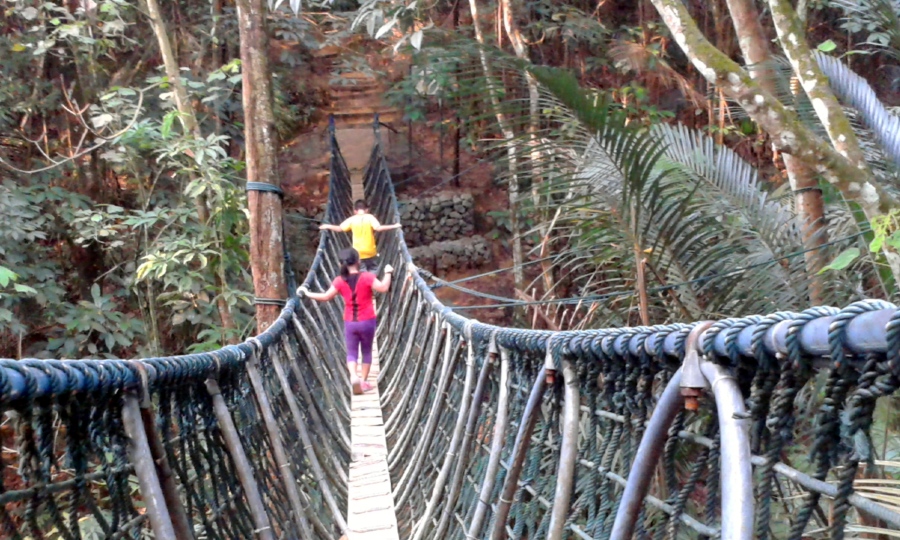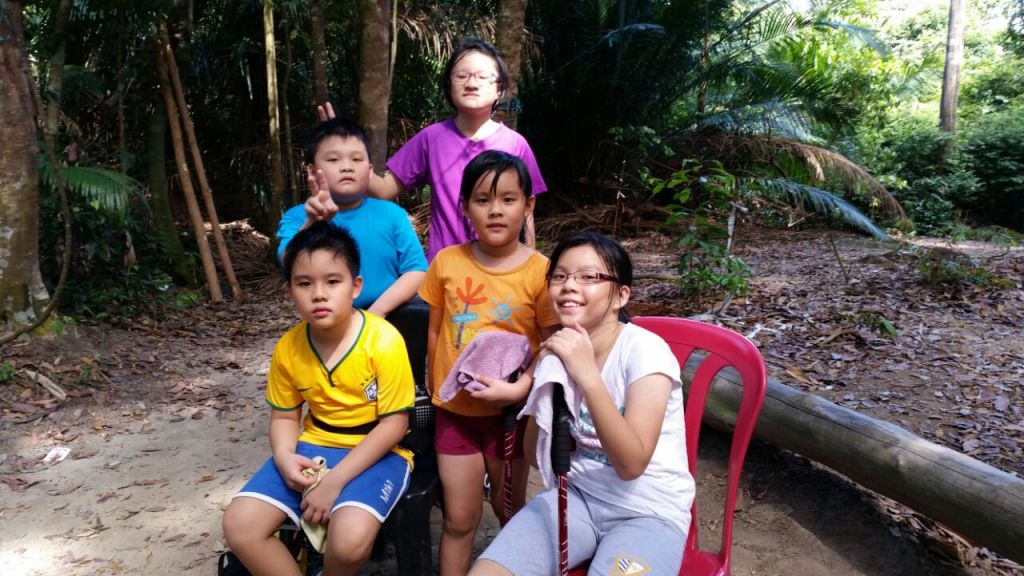
If like me, you love hiking, you would probably have asked yourself how you could persuade your children to enjoy hiking and the great outdoors as much as you do.
My breakthrough came when my brother-in-law needed to train for his expedition to climb Mount Kinabalu and decided to bring his seven-year-old along.
Bukit Putih in Cheras (also known as Ah Pak San in hiking circles) was our destination of choice. Not usually described as a beginner slope, I was doubtful my nephew would be able to make it.
As it turned out, my concerns were misplaced. Phillip made it to Station 6 while his father had to call it quits two levels below. I should have been worried about the father, not the child!
Children are more resilient than we give them credit for and I would like to share some tips on how to make hiking fun for them as well.
Get into the kid zone
This simply means thinking like a child, knowing what appeals to them and adjusting to their pace. A surplus of patience and flexibility will also come in very handy, trust me!
My usual Saturday hikes start at 2.30pm, the hottest time of the day and last about three hours. To suit the children, the time was changed to the cooler hour of 5pm, with a maximum duration of one hour.
The whole idea is to ensure the first experience is fun so they will want to go again.
Modify your goals
You won’t be able to go as far, as fast or as high as you usually go. You may not even get on a trail, let alone reach the end of the trail.
If the hike lasts 30 minutes, great. If it lasts 10 minutes—make sure it was a fun 10 minutes and don’t force the issue.
The first two outings to Bukit Kiara were dismally short and mainly road hikes. Not used to the heat and discomfort, my brother-in-law and 7-year old twins got hot and thirsty very quickly, stopping frequently for water. We barely hiked a kilometre!
While the twins enjoyed going off-road, happily walking along the narrow winding path, they were easy prey for mosquitoes. Itching from at least 2 dozen bites all over their arms and legs, we retreated back to the road and called it a day.
Gear Up
Children enjoy gearing up for a hike and will want to go just so that they can use their new gear. Phillip liked having his own things, so we outfitted him with a waist pouch to store his water bottle. It gives them a sense of purpose and engages them in the entire event.


For the twins, the novelty of carrying a trekking pole was incentive enough. At the same time, they learnt how to use it and gained confidence. On the easy downhill, Phillip kept himself amused by brandishing his pole by turns as a missile launcher, sniper rifle and bayonet, returning imaginary enemy fire.
Emphasize fun
A good hike is one that appeals to a child’s sense of exploration and adventure. Be prepared to go with the flow and allow them to be distracted and pursue whatever catches their attention. This means stopping frequently to examine wild mushrooms, a butterfly or an ant.
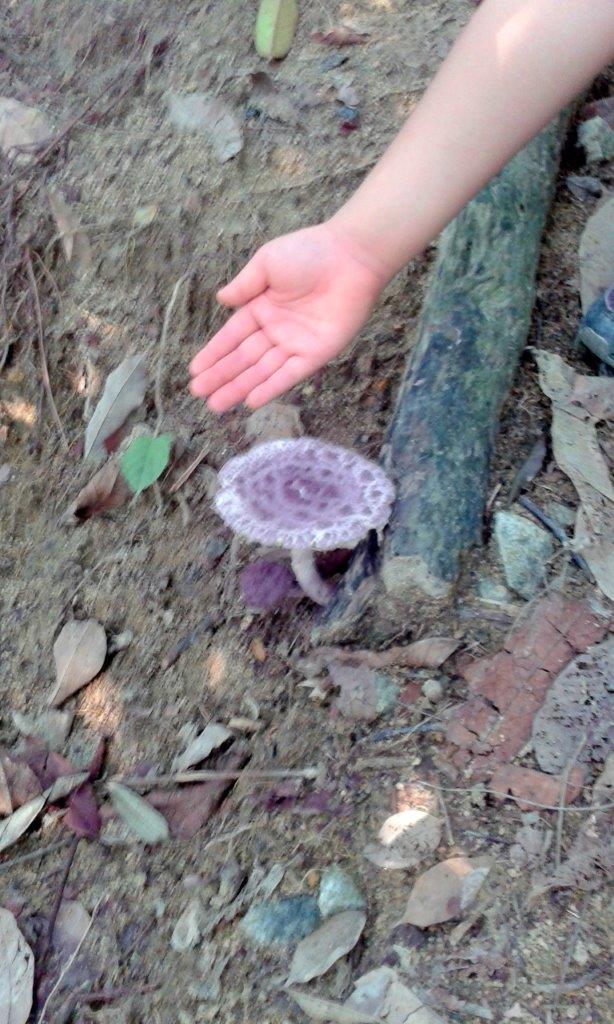
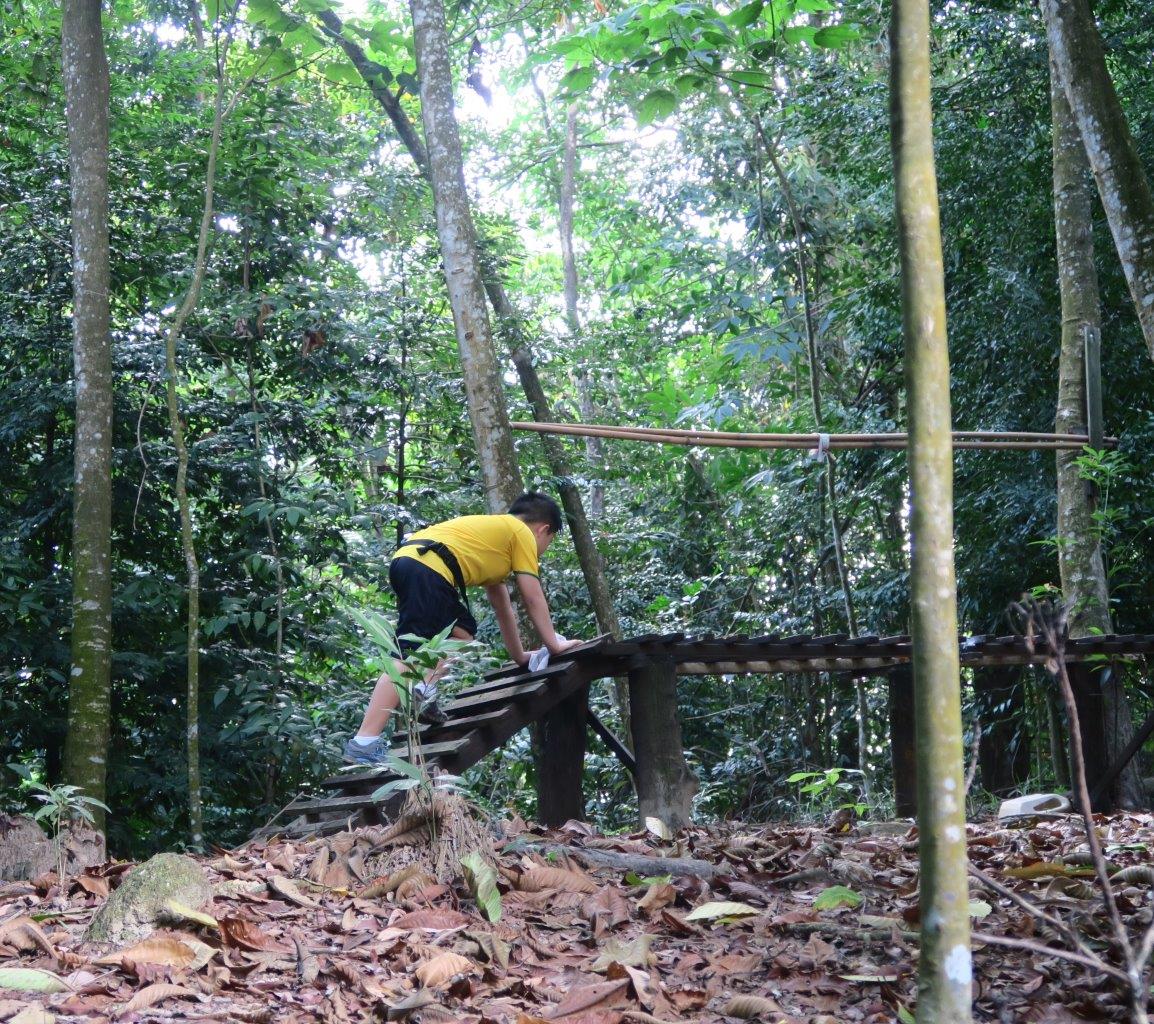
A slightly different terrain can also be exciting for children. One time, we came upon a portion of the path lined with stone slabs to avoid getting mud on our shoes. The simple act of balancing his way across the stepping stones was an adventure for Phillip, who asked to do it again. Similarly in Sri Bintang, the twins wanted to walk across the planks and roof tiles, back and forth, many times.


While I may have initiated the interest in wildlife, Phillip and Patricia took it a step further by taking pictures of their discoveries. Passing through a bamboo grove, Phillip found the arch formed by leaning bamboo canes pretty and insisted on snapping a picture of it, showing that he could already appreciate nature’s beauty, at the tender age of 7.
Play games, set goals
It’s all about keeping kids engaged and interested in the activity.
One method that seemed to work is the reward system. I tell them what to expect, and to look out for. This sets them on a mission while I am spared the incessant “Are we there yet?” and “How much longer?” questions.
I first tested this out in Bukit Gasing. Mission One was to look out for three benches and after that, two benches. The simple tasks worked very well to sustain the children’s interest.
The “game” became more technical when I was asked “How many minutes to the pond?” and I told them it would be about 30 seconds.
The children started counting backwards as they walked and, luckily for me, the children did not protest when my estimate was way off.
It is important to know what lies ahead, break it into sections and reset the goal after each section. That day, we managed to hike for 1 hour 45 minutes.
Energy Stops & Snacks
Young children get tired and hungry easily and will need to load up. Plan to take lots of breaks, but call them “energy stops” rather than rest stops. Better yet, call for rest stops before they ask for them.
Snacks provide great motivation to keep kids moving on trail. Carry extra water, load up on biscuits, packet drinks and energy bars.
Waterfalls, Lakes & Suspension Bridges
I pique the twins’ interest by sharing a feature unique to a hike site. For Bukit Gasing, I used the suspension bridge and Watch tower to entice the children. Likewise, for Ah Pak San, I told them about the hilltop gym and for Bukit Kiara – it was a bicycle bolted to the top of a fence.

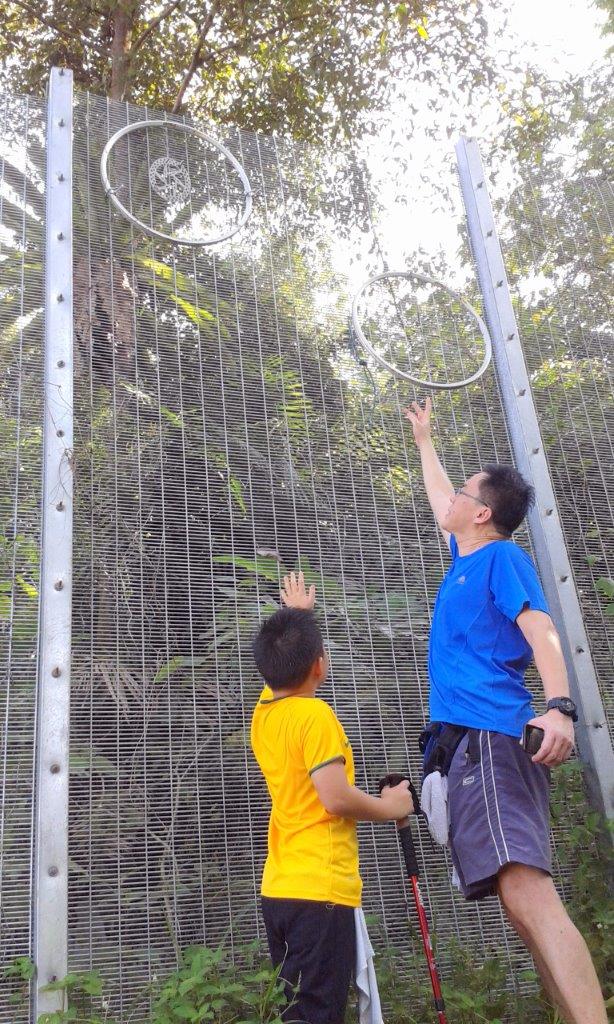
The anticipation and excitement of seeing something unusual is sufficient motivation. But beware, children expect to see the feature immediately, and so be prepared to keep them occupied getting there.
Positive Enforcement
While safety is always a priority, try not to be a mother hen. The last thing you want is for the child to tune you out. Boys being boys, Phillip’s headlong dash downhill gives me heart stopping moments each time I see him totter, on the verge of falling, only to miraculously get his balance back.
I had to refrain from saying ‘Be careful’ or ‘slowly’ every 5 minutes. Instead, asking something like “You know how a crab walks?” gets their attention while I demonstrate how my feet points across the trail rather than straight down to avoid slipping and sliding.
And if they fall, don’t make a big deal out of it. Help them up, dust off and carry on unless it’s a serious injury. I slipped too, once and the takeaway from that is that accidents can happen even when you are careful and it’s ok to fall down.
Finally, never underestimate the power of encouragement. Praise them for how well they are doing.
Have Competition
Another great motivator is competition. Though he was tired during the Ah Pak San outing, Phillip kept going because the other kids were ahead and he didn’t want to be outdone.
It’s amazing how the mere presence of other children can spur a kid on. Children enjoy sharing a fun experience with someone their own age. As kids get older, they will want to spend time with friends. Allow your child to invite a friend along. They can share the experience and entertain each other.

Peer pressure : Zhi Min (in orange) and Soon Li (in yellow) provided healthy competition for the twins
Keep It challenging
As their ability progresses, be sure to upgrade the objectives and keep it interesting. Having clocked at least 5 hikes, you won’t need to persuade them to join you. In fact, they might even ask to go hiking and tell you that flat trails are boring!
Time to up the ante. We revisited Ah Pak San with Saga Hill Top as the final destination. Arriving earlier, the twins had a head start and pushed even harder when they were told that 13-year old Cousin Claire just arrived and will soon catch up.
We took a circular route with an extended uphill past all 6 stations to get to the Hilltop Gym. That day, the children made it to the top after two hours. Quickly refuelling on energy snacks, the children could not wait to test the swings, hammocks, exercise machines and parallel bars.
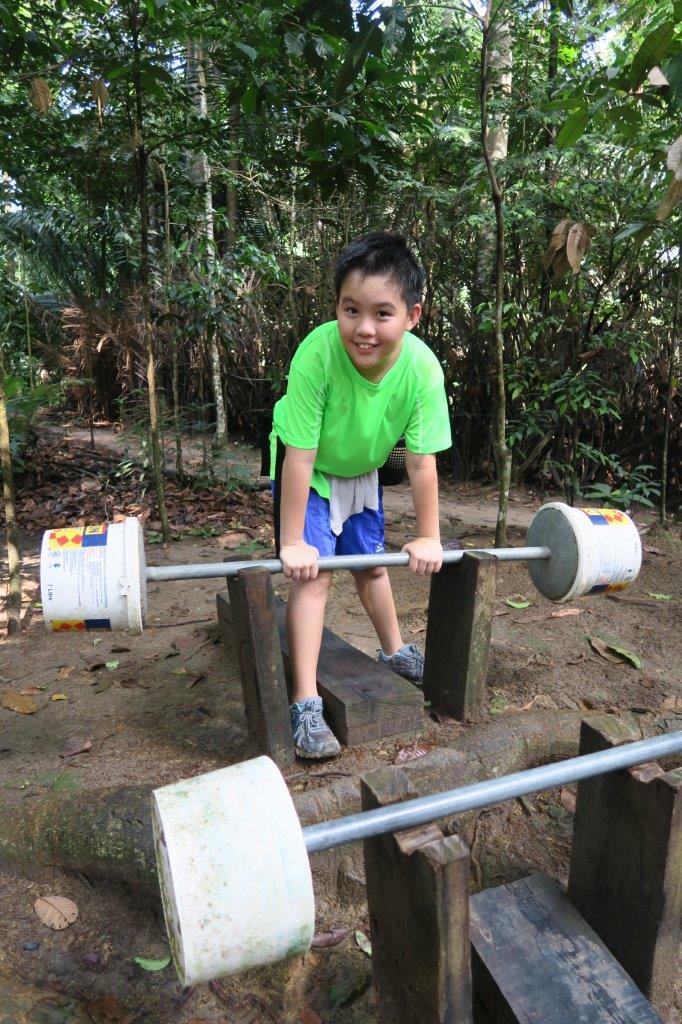
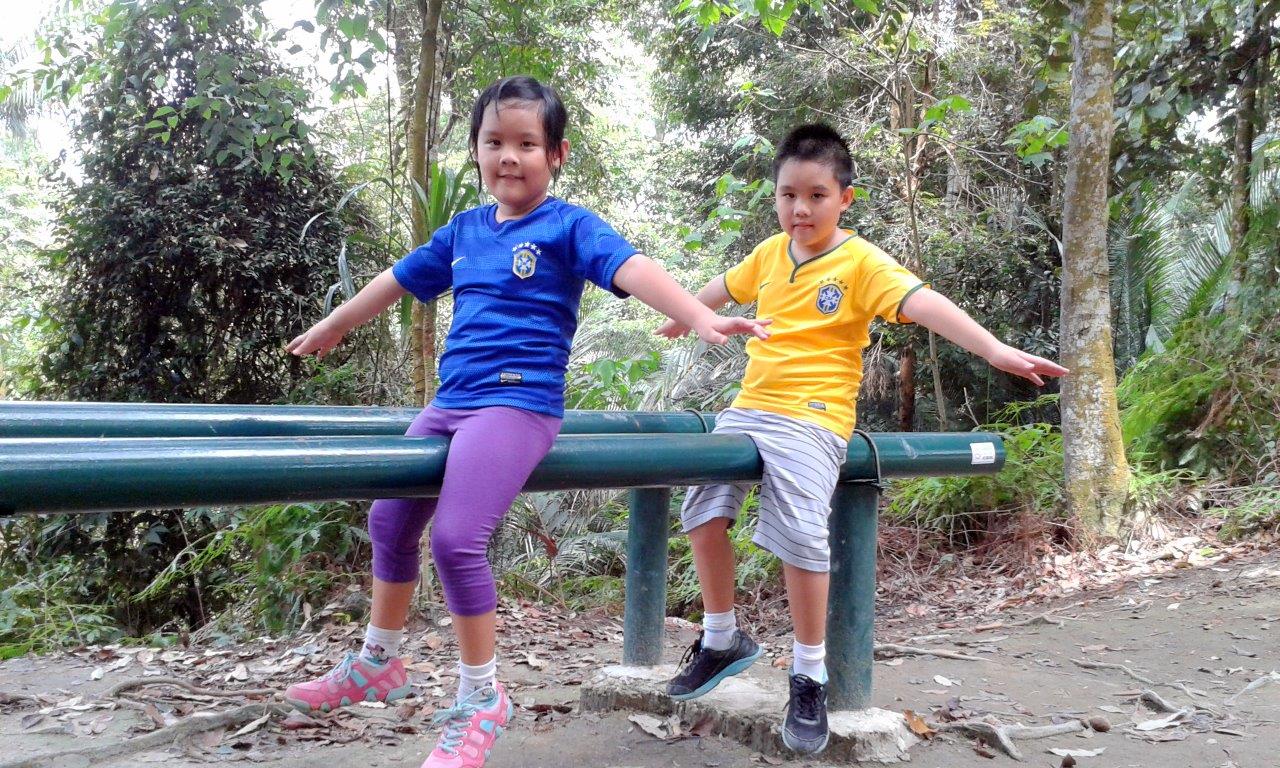
They were reluctant to leave and we only set off again after 30 minutes. We took a direct route down, making it back to our cars in an hour.
That hike lasted three-and-a-half hours 3.5 and we covered 9.6 km. Mission accomplished!
Hike often!
Start a family tradition of going hiking one or more times a month. Children love the sense of adventure and doing something new. There’s a wide range of urban trails and sights for children to discover the joys of being outdoors.
Let kids participate in the hike planning. I usually give them a choice by asking “Shall we do Gasing Hill or Bukit Kiara?” Philip would usually pick Bukit Kiara, as his idea of fun is to bring the mosquito racket to zap them.
Participating in outdoor adventures will help children develop good judgment and decision-making skills, which they can use in other areas of their life.
What to Bring :
- Water and plenty of snacks
- Sunscreen
- bug spray
- raincoat
- extra clothes
- First aid kit
